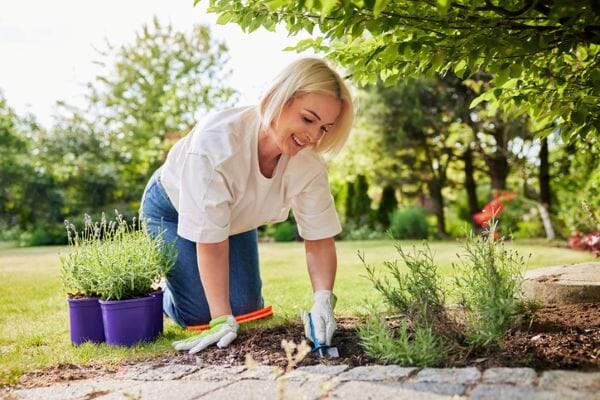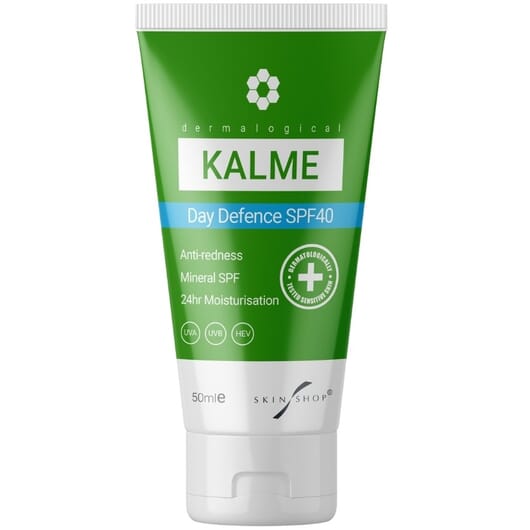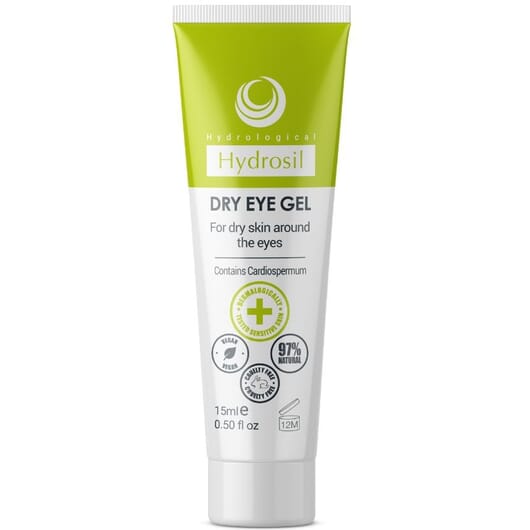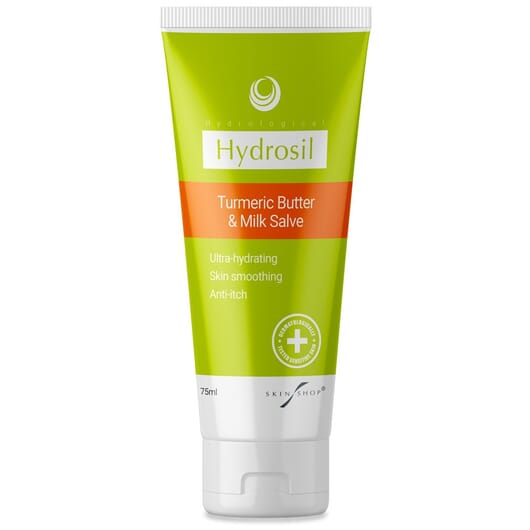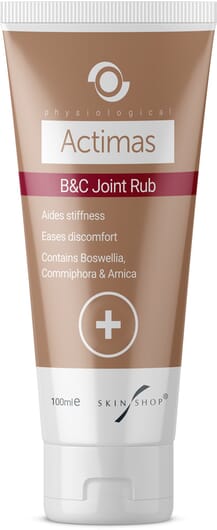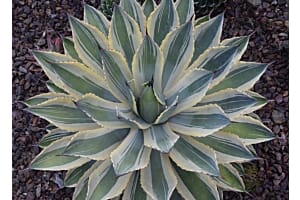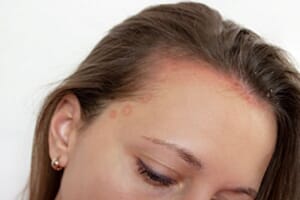One thing that’s more certain than the weather this Spring is that gardens will soon be in full bloom, come rain or shine.
So, for green-fingered enthusiasts Spring means a time of increased outdoor manual work.
Which is wonderful for our gardens but perhaps slightly less of a welcome season for skin and joints.
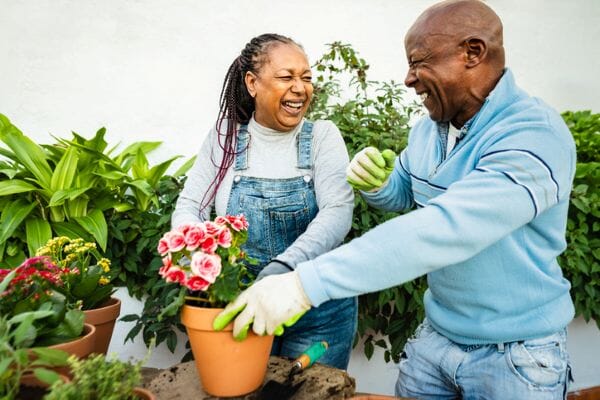
Manual work with tools to dig, plant and prune blooming gardens and flowerbeds is harsh on both hands and knees as well as on joints. Hours spent outside also means skin is exposed to sun and outdoor blustery weather so skin can also become more vulnerable to UV damage and inflammation.
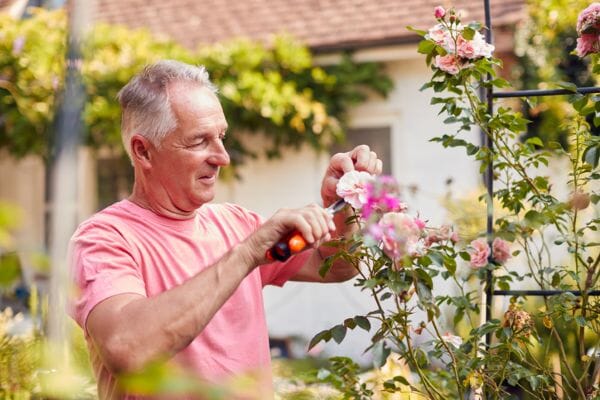
Sore hands, cracked fingers, chaffed knees, blisters, sunburn and ruddy red skin are common gardener’s skin woes which can also aggravate skin conditions such as rosacea, hand eczema and dermatitis. In addition, being submerged in pollen bursts for hours can aggregate eyes, especially of you are prone to hay fever or allergies, its can also trigger underlying skin conditions such as eye eczema or blepharitis.
Stiff joints and swollen joints are also common ailments of hours spent doing repetitive manual work and bending and kneeling, which ca trigger osteoarthritis pain flares.
Dermatologist Dr Eva Melegh gives 5 top tips to prevent typical gardener’s skin woes;
1. Skip Scrubbing
If you love gardening, then it’s likely that you don’t mind getting your hands dirty. However, when it comes to cleaning hard-working gardening hands, it’s important not to use over scrub hands or use stronger forms of detergents, hand washes or soaps to get the dirt off. Even if fingers and nails are stained, never be tempted to use any form of bleach or solvents to get the dirt off.
Most dry hand skin conditions such as eczema, dermatitis and exfoliative keratolysis are made worse by exposure to irritants such as soaps, detergents and solvents.
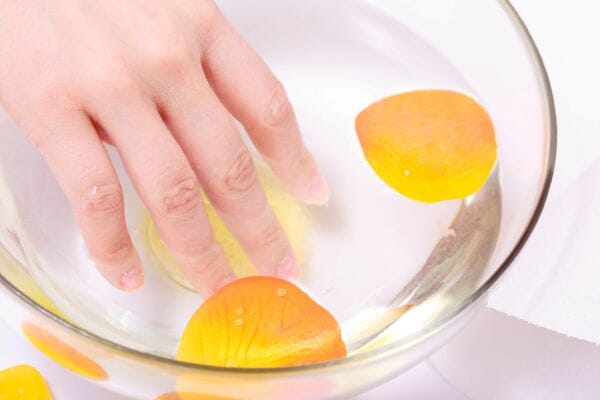
Scrubbing hands with a nail brush or loafer is also very abrasive and may cause micro damage to sensitive and over-used hands that can trigger an eczema flare.
It’s better to soak dirty hands and nails in warm (not hot) water with some natural oil in it such as rosehip or even normal olive oil until the dirt gently soaks off.
2. Switch To Salves
Aside from gardening, the fact that sore and dry hands, cracked fingers, cracked palms, dry knees and cracked knees can also be caused by underlying skin conditions such as eczema and dermatitis, any products used to re-hydrate dry hands and dry knees should be hypoallergenic.
Gardening can trigger flares ups of existing skin conditions as well as cause damage to normal skin too. So, it’s best to avoid products with any perfumes in, as well as ones that contain MI, SLS, Lanolin, petroleum or alcohol.
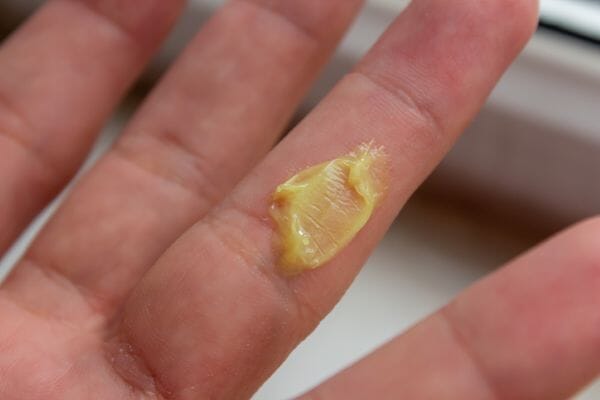
Use salves on sore, cracked and dry hands and dry chaffed knees rather than creams as they tend to have more staying power and offer more intensive hydration on areas of rough dry and damaged skin. Preferably look for salves that contain anti-inflammatory ingredients to help reduce swelling and irritation of dry and damaged fingers, hands and knees.
Try Hydrosil Turmeric Butter & Milk Salve, for relieving dry, cracked and chaffed gardener’s hands and knees. It contains highly concentrate turmeric to aid with inflammation along with hypoallergenic donkey milk to sooth and moisturise and plant steroid cardiospermum to reduce itching and irritation.
3. Guard Skin Against Gardening Gloves
If you are wearing gloves to do the gardening that’s great as they help protect hands from damage.
However, gardening gloves can also be quite abrasive to hands, especially if you are doing heavy gardening work. In addition, the materials of many gardening gloves combined with the sweat the builds up inside the glove can be irritating to hands prone to eczema, dermatitis and exfoliative keratolysis and lead to a flare up of dryness and cracking.
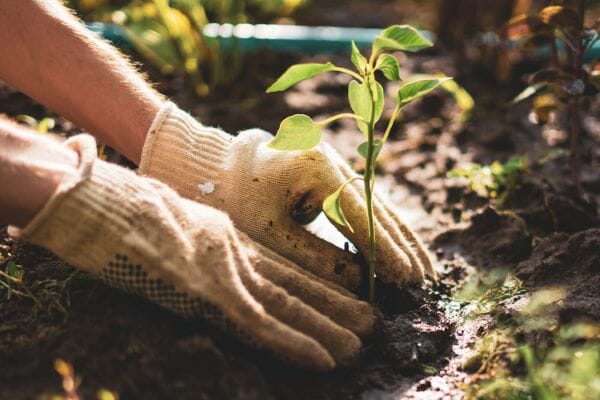
To avoid this, wear a pair of thin cotton inner gloves under your gardening gloves.
4. Slather On SPF
Gardener’s skin is exposed to the elements, whether its sunny or not, skin which has been hidden away during winter will be extra vulnerable to UV damage.
If you suffer from sensitive skin conditions such as rosacea or eczema, then skin is even more vulnerable.

Wearing a wide brimmed hat is the first step to guarding against UV damage plus an SPF, which crucial for protecting gardener’s skin during the unpredictable Spring weather. Mineral SPF’s are much better for sensitive skin than chemical filters, and zinc oxide is particularly effective as it is very stable when exposed to UV rays and also has anti-inflammatory properties so helps in keeping skin prone to inflammation and redness calmer.
Try Kalme Day Defence, a pure zinc mineral SPF with added anti-redness ingredients to not only protect from UV damage but aide in preventing flares of ruddy and red skin.
5. Alleviate Aching Joints
Repetitive Strain Injury (RSI) and aching joints are common complaints for gardeners due to all the bending, kneeling, digging, weeding and pruning required in quite a short burst of time in order to cope with the sudden bloom of Spring gardens.
Make sure that you have enough medication to get you through Spring period. Plan ahead to ensure that you have everything you need and don't run out.
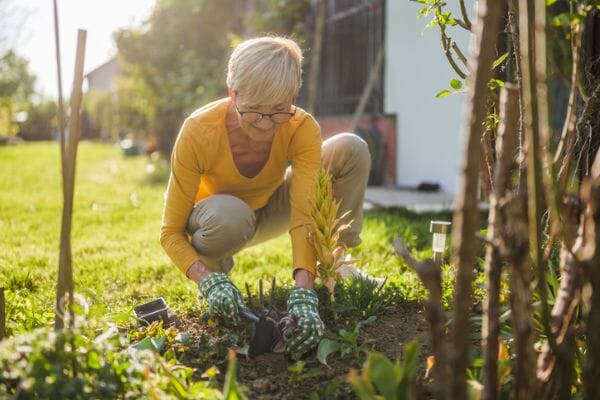
Rather than just relying on taking oral painkillers to help ease the pain which can upset your stomach, look into natural topical joint pain relief aides that can help keep painful joints less inflamed. These topical treatments work well on gardener’s aches and pains and the majority of them are on knees and hands which are close to the skin’s surface and so can be easily reached by topical pain-relieving balms and creams.
Try Actimas B&C Joint Rub, which contains high concentrations of both frankincense and myrrh, both well-documented essential oils proven to bring relief from pain of joint inflammation.
6. Avoid Allergy Eyes
Plant and free pollens are at their strongest during Spring and can cause havoc with eyes, especially if you are prone to allergies and hay fever.
Birch tree pollen is the first pollen to appear in the hay fever season. Around 25% of hay fever sufferers are allergic to birch tree pollen. The ragweed plant is also highly allergenic. Oil seed rape, oak, grass and nettles are also all common plants for hay fever sufferers to react to.
Plants can also cause allergies on the skin. Phytophotodermatitis is an allergic reaction caused by the chemical mix of UV light and the juices produced by certain plants and shrubs that bloom in Spring in most English gardens and countryside. Phytophotodermatitis causes hay fever like symptoms as well as rashy, red skin.
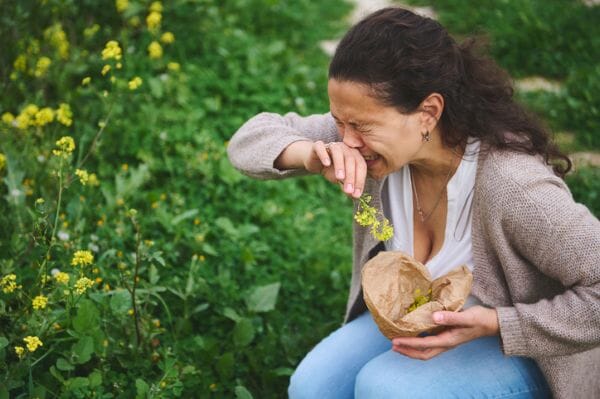
Try to garden in the mornings while plants are still dewy as there is less pollen in the air. Wear sunglasses to dry and reduce the amount of pollen entering the eyes.
After gardening take a bath or shower as soon as possible to reduce itching and rashes. Use an eye product that contains anti-inflammatory ingredients both during the day and at night to keep eyes calmer and less itchy.
Try Hydrosil Dry Eye Gel, a light eye gel that contains and natural plant steroid that can aide in reducing allergy-triggered puffy eyes, itching and redness from Spring garden irritants.



